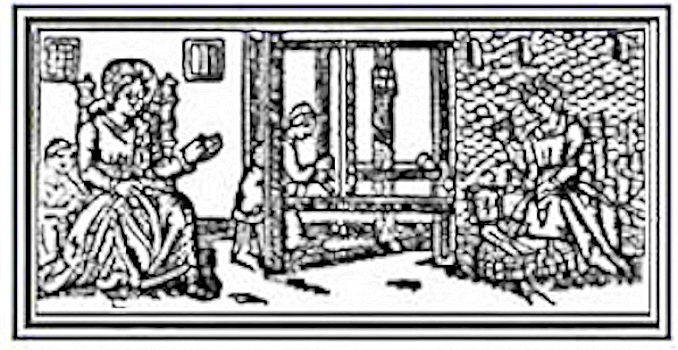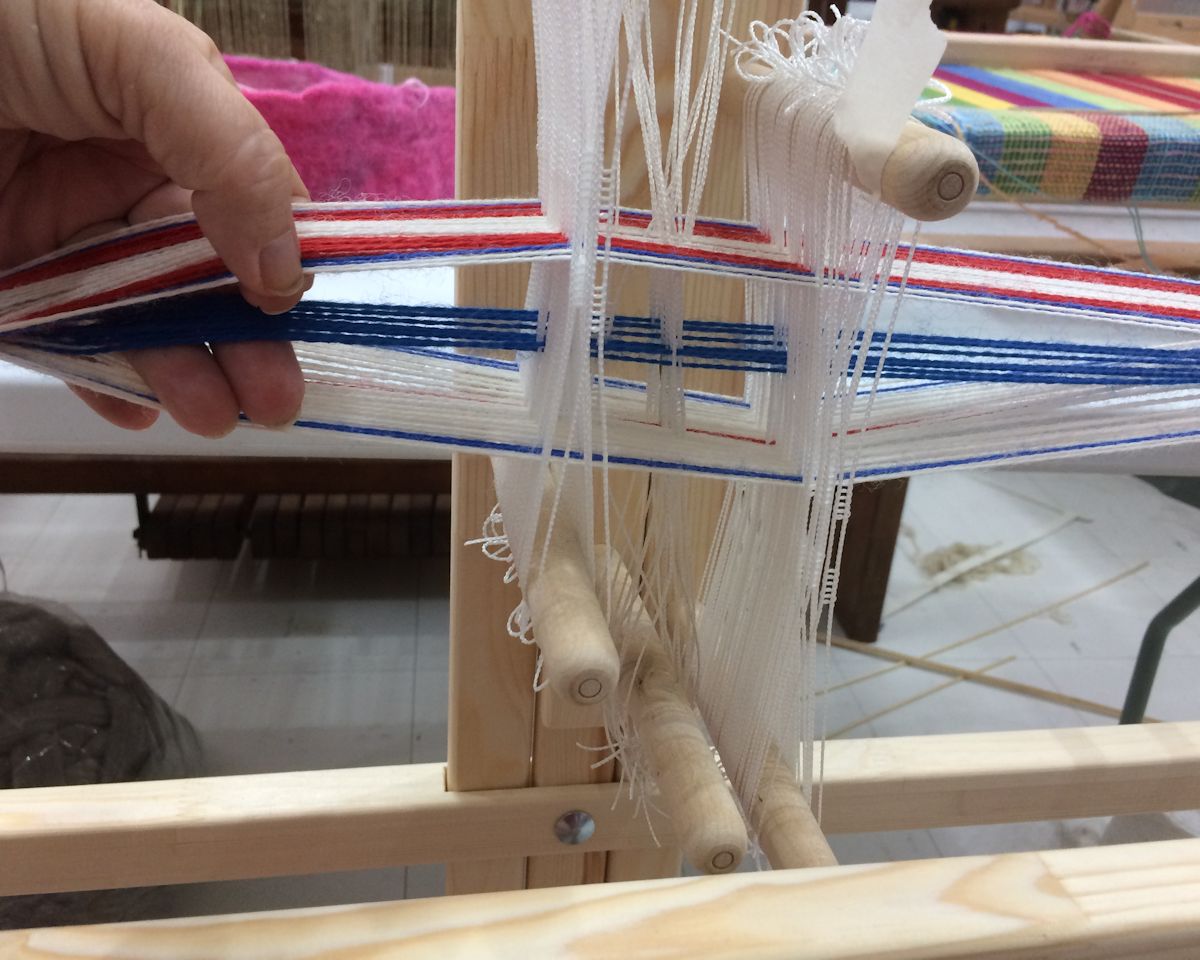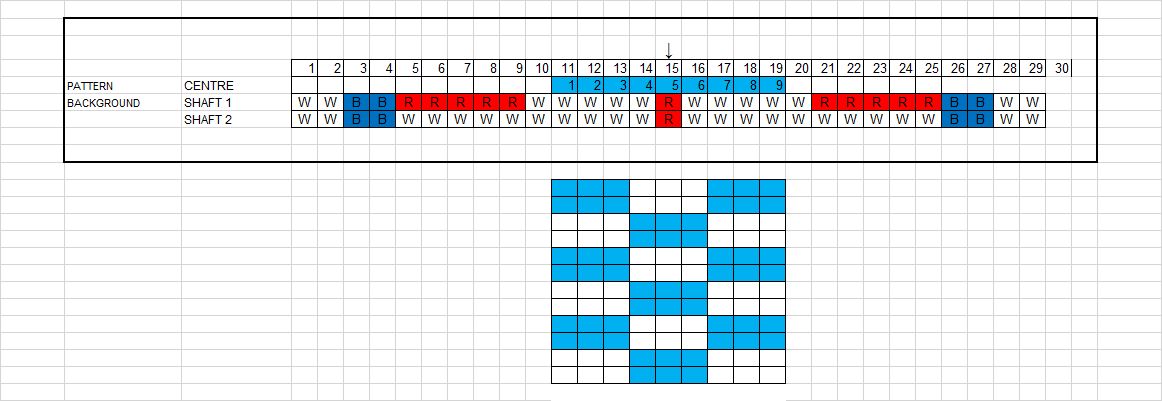I recently purchased a Glimakra 2 shaft band loom so that I can weave narrow bands more easily. I have been experimenting with how to also weave pickup patterns on this loom.
Although there are only 2 shafts on this loom, resulting in a tabby type of weave structure, you can also add another warp thread that does not go through one of the heddles. The warp thread rests on the front and back beam and does not move when the sheds are raised and lowered. The extra pattern thread sits in between the 2 threads that go up and down. This makes it possible to manually pick up or raise the pattern thread so that it shows above the ground weave. The pattern threads that are dropped, then move below the surface to the underside of the band.
When you pick up these pattern threads, it is important to have a tight tension on the weft, so that the warp threads are pulled closely together, creating a warp faced weave. If the weft is not pulled tightly enough, the extra pattern threads slip in between the background warp, instead of popping up to the surface, or below the ground weave structure.
The extra pattern thread (Blue) is not threaded through the 2 shafts but runs in the centre of the warp threads.
But because I was working with some sticky wool yarn, I thought that I would add another heddle in between the 2 shafts, in order to help separate the warp threads a bit better, to help with the sticky warp. I used the 2 extra posts that come with the loom for inkle weaving, and used some standard length texsolv heddles on these posts. I adjusted the length of the heddles by tying small knots at either end, so that the heddle fits the length of the posts.
Since the pattern threads sit clearly in the centre of the raised and lowered warp threads, it is quite simple to pick up the pattern threads that you want, and then pass the weft shuttle through the raised warp.
Of course, since I am doing pickup weaving rather than simply passing the shuttle through, it is a bit slower going than weaving the standard style of bands. But this method makes it possible to weave intricate designs on the simple band loom.
As this is a somewhat sticky wool warp, I open the shed with my fingers rather than beating into place with the shuttle.
9 Thread Pattern Block
Warp Length: 2 meters
Background Warp Yarn: 8/2 Wool
No. Ends: 58
Pattern Warp Yarn: 6/2 Wool
No. Ends: 9
Shuttles
Many bands are woven using a small bobbin to hold the yarn, and the weft is beaten down with a band knife.
I prefer to weave with the yarn wrapped on a netting shuttle as this leaves my second hand free to pick up the yarns and the weft can also be beaten with the edge of the shuttle. I like to use a small size fishing shuttle as I find it easier to hold in my hand than the larger Stoorstalka one.
Sticky Warp
Woven narrow bands are generally woven warp-faced so the warp threads are sett very close together. When using a wool warp yarn, the wool tends to be a bit hairy and can cause the warp to be quite sticky and almost impossible to change the shed or pass the shuttle through very easily. This can be extremely frustrating.
To help solve this problem, there are a few things you can do.
Extra Lease Sticks
Open the shed and put a stick through the warp, at the back of the loom. Then open the other shed and put another stick into the shed. This helps to separate the warp yarns.
Warp Sizing
There are a number of products that you can use to coat the warp yarn, to help reduce the fuzz and stickiness. You may have to try a few to see what works best with your yarn.
Hair Conditioner
Coat the yarn with some hair conditioner to help smooth the frizziness. I tried the hair conditioner on a small section. I found that it worked somewhat but there was still some stickiness.
Spray Starch
I wound all of the remaining warp on the loom, onto the front beam, and as I rolled the warp, I sprayed the warp yarns with some spray starch. Then I rolled the warp back onto the back beam. I let this dry for about an hour before I wove again.
This seemed to work much better. Next time, I will spray the warp before I wind it onto the loom.
Boiled Flour
Boiled flour sizing will work on both wool and cotton yarns.
1/2 cup all purpose flour
2 cups water
Make a past of the flour and mis in some of the water. When the mixture is smooth, add a cup of water and heat slowly. Continue to stir and bring the water to boil. Continue to stir until the mixture becomes pearly and translucent. Add the remaining water, remove from heat and stir until the mixture is smooth. The sizing mixture is ready to use.
Gelatin
2 Tbsp or 2 packets of gelatin powder. (unflavoured)
1/4 cup cold water
1 cup hot water
Soak the gelatin powder with the 1/4 cup cold water until it swells.
Stir in 1 cup boiling water until gelatin dissolves.
Add remaining 3/4 cup cold water.
Gelatin sizing is ready to use.
This sizing can be runny but dries quickly.
Milk
1 pkg instant non-fat dry milk
2 cups cool water
Stir powdered milk into water until well mixed.
Milk sizing is ready to use.
Do not use whole milk as the butterfat can be difficult to scour out.
References: Big Book of Handspinning, Alden Amos
Band Weaving
How to Weave Pickup on a Band loom – Simplified
Glimakra Band Loom
Grene Band Weaving Finish
Beaivi Band Loom Weaving
AMAZON: Hand picked Band Loom Weaving Books
Tape Loom Weaving… Simplified
Handwoven Tape: Understanding and Weaving Early American and Contemporary Tape
Norwegian Pick-Up Bandweaving
The Weaver’s Inkle Pattern Directory: 400 Warp-Faced Weaves
Band Weaving Books
Some of these books are out of print.
Traditional Finnish Decorative Bands by Theodor Schvindt (English) ISBN 978-952-5774-88-7 available from Salakirjat
Moraband by Barbro Wallin (Swedish) ISBN: 978-01-978632-5-4 available from Zorn Museum
Esti Kirivööd by Piia Rand (Estonian) ISBN: 978-9949-9363-2-8
Lapilised Vööd by Merike Freienthal and Veinika Västrik (Estonian) ISBN: 978-9949-9363-0-4 avalable from Apollo
Patterned Sashes: The Common Cultural Layer by Anete Karlsone, Latvijas Nacionalais Kulturas Centrs, 2014 ISBN 978-9934-528-09-5 (Latvian)
Lithuanian Sashes by Anastazija Tamosaitiene and Antanas Tamosaitis, Toronto:Canada, 1988, ISBN 0-9191187-04-8
Sjnjissjkot ja lahtat Samiska band fran Arvidsjaur, Arjeplog och Mala (2000) published by Sameslojdstiftelsen Sámi Duodji ISBN 91-631-0499-7
Girjjit Samisks vavmonster Karesuando, Jukkasjarvi och Gallivare (1999) ISBN 91-630-9564-5
Haugen, A (1987) Samisk Husfild I Finnmark, Oslo, Norsk Folkemuseum ISBN 82-529-1073-4
Latviesu Jostas Latvian Belts by Aleksandra Dzervitis and Lilija Treimanis
Lithuanian Sashes by Anastazija Tamosaitiene and Antanas Tamosaitis, Toronto:Canada, 1988, ISBN 0-9191187-04-8
 LONGTHREAD MEDIA VIDEO
LONGTHREAD MEDIA VIDEO
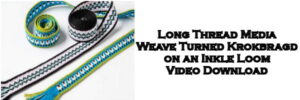 LONGTHREAD MEDIA SUBSCRIPTIONS
HANDWOVEN MAGAZINE
PIECEWORK MAGAZINE
SPINOFF MAGAZINE
LEARN LONGTHREAD MEDIA
PAIVATAR HANDMADE
LONGTHREAD MEDIA SUBSCRIPTIONS
HANDWOVEN MAGAZINE
PIECEWORK MAGAZINE
SPINOFF MAGAZINE
LEARN LONGTHREAD MEDIA
PAIVATAR HANDMADE
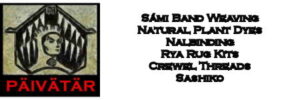 Paivatar on YouTube
Visit my YouTube channel for how-to craft videos.
Paivatar on YouTube
Visit my YouTube channel for how-to craft videos.
Or Please visit my Channel on Rumble for more how-to videos.
https://rumble.com/Paivatar
LIVE STREAMS - Paivatar Studio
KICK
TWITCH MAKERS&CRAFTING
YOUTUBE
Categories: BAND WEAVING, SAAMI CRAFTS, Small Looms
